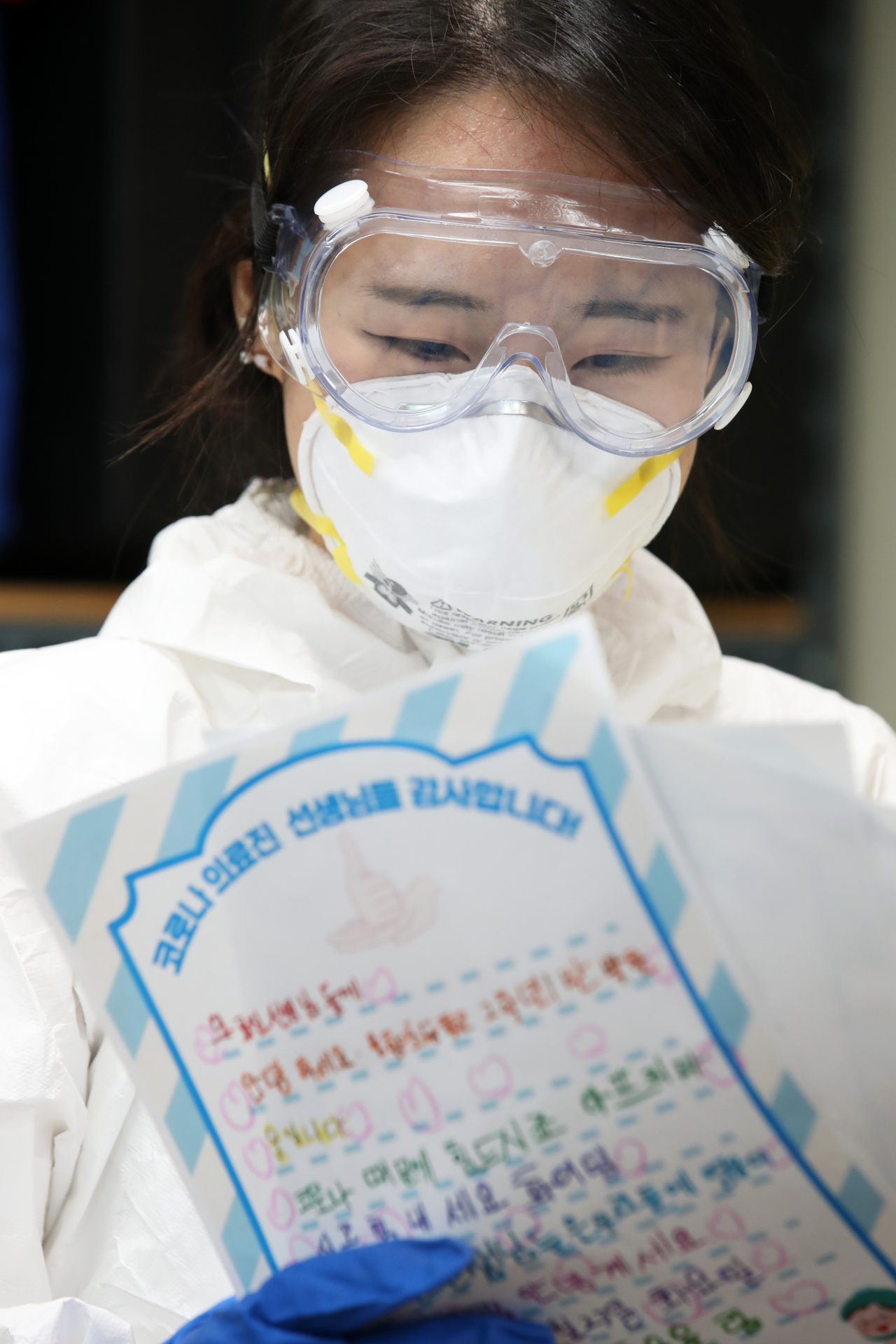Lowered bar for releasing COVID-19 patients from hospitals
By Park Han-naPublished : June 24, 2020 - 17:50

Health authorities on Wednesday decided to lower the bar for releasing coronavirus patients from quarantine, as virus infections continued a sustained rise, threatening the capacity of the local health system.
Starting Thursday, asymptomatic patients will be released from quarantine if they show no symptoms for 10 days after having tested positive, according to the Central Disaster and Safety Countermeasures Headquarters. At present, isolation ends only when the patients turn two negative test results, 24 hours apart, on the seventh day after COVID-19 diagnosis.
“So far, patients with symptoms have been released if both the test criteria and the clinical improvement are met, but those who fulfill one of the two requirements will be released from isolation from now on,” Vice Health Minister Kim Gang-lip said during a daily briefing.
The two requirements were when they have tested negative twice in a 48-hour period and when they showed no fever without the use of an antipyretic drug after at least seven days have passed since the date of a positive COVID-19 diagnosis.
The new measure is designed to resolve problems stemming from patients occupying hospital beds even though they are no longer contagious.
It is based on findings from data analysis of domestic patients which indicated no infection occurs when a person comes into direct contact with infected individuals four days after the onset of symptoms.
“Genetic tests and polymerase chain reaction tests are very useful tools as they can diagnose patients even if they are not contagious, but at the same time patients continue to get positive results even after they show improvement in symptoms. … This causes prolonged isolations,” said Jeong Eun-kyeong, chief of the Korean Centers for Disease Control and Prevention.
In the face of the emergence of new small infection clusters in the Seoul metropolitan area, Daejeon and South Chungcheong Province, the vice health minister said he will ensure proper medical treatment and facilitation of patients in the event of mass infections.
“Recently, a series of group infections has occurred and the spread of new cases has been going beyond the metropolitan areas,” Kim said. “But there won’t be difficulties in securing hospital beds and treating patients considering the current patients’ occurrence rate.”
South Korea reported 51 new cases of the novel coronavirus on Wednesday, with new infections detected in more cities compared to the previous trend of concentration in the Greater Seoul area.
Of the new cases, 31 were domestic, including 11 which were registered in Seoul and eight in Daejeon.
In an afternoon briefing, health authorities said five cases were traced to an automobile club that held a meeting near the Han River, popular picnic spot in Seoul, on June 15.
Out of 10 people who attended the event, four were confirmed to have contracted the virus, as well as one other who came into close contact with one of them.
Thee more cases linked to door-to-door sellers hired by Richway, a Seoul-based health product provider, were confirmed, bringing the total to 205.
The KCDC chief urged elderly people to refrain from visiting promotion events for medical devices and health supplement food, stressing such gathering could put them at risk.
“The tasks health authority faces are slowing the spread of coronavirus in the metropolitan area and Chungcheong area. We also have to protect high-risk groups such as elderly people and those with underlying diseases,” she said.
Twenty cases were imported from overseas amid concerns that more could be traced to a Russian-flagged cargo ship that docked in Busan, after 17 crew members tested positive Tuesday.
Of the imported cases, 12 were detected at border checkpoints and eight tested positive while under self-quarantine in Busan, Daegu and Gyeonggi Province, among others.
The government decided to carry out quarantine inspections aboard vessels arriving to Busan from Russia.
It is a follow-up measure to deflect mounting criticism over loopholes in the self-reporting document-based system after 17 crew members of a Russian-flagged cargo ship docked at Gamcheon Port in Busan tested positive.
The government has been holding physical screening aboard ships from countries it designated as “quarantine inspection-required areas,” such as China, Hong Kong, Macao, Italy and Iran.
However, Russia, which still reports over 7,000 daily infections after hitting its peak in May, was not on the list for tightened quarantine measures.
“We plan to actively consider seeking reimbursement from shipping companies if they incur social expenditure following a detection of infection from vessels.” Kim said.
With 51 new cases, the country’s total caseload rose to 12,535. The death toll remained flat at 281. Twenty-two more people were released after full recoveries, as the total number of recovered patients came to 10,930.
By Park Han-na (hnpark@heraldcorp.com)








![[Kim Seong-kon] Democracy and the future of South Korea](http://res.heraldm.com/phpwas/restmb_idxmake.php?idx=644&simg=/content/image/2024/04/16/20240416050802_0.jpg&u=)








![[KH Explains] Hyundai's full hybrid edge to pay off amid slow transition to pure EVs](http://res.heraldm.com/phpwas/restmb_idxmake.php?idx=652&simg=/content/image/2024/04/18/20240418050645_0.jpg&u=20240418181020)

![[Today’s K-pop] Zico drops snippet of collaboration with Jennie](http://res.heraldm.com/phpwas/restmb_idxmake.php?idx=642&simg=/content/image/2024/04/18/20240418050702_0.jpg&u=)